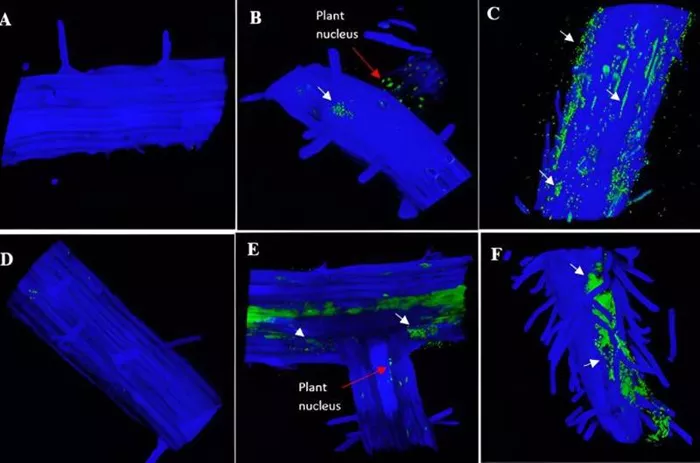Scientists Uncover Battle Between Duckweed and Microbes.
Pond Life and Evolutionary Struggles
While gazing at a freshwater pond, you might notice small green plants with oval-shaped leaves, floating in clusters. These plants, known as duckweed or water lentils, can cover the pond’s surface and multiply rapidly, doubling in number every one to two days. Beneath the calm surface, however, an evolutionary battle rages between these plants and invading microbes.
Understanding Plant-Microbe Relationships
Plants rely heavily on their surrounding microbes, including bacteria, viruses, and fungi. This community, known as a microbiome, is crucial for plant health. While some microbes are beneficial, others are pathogenic and pose a threat. Investigating how plants defend themselves against these pathogens can help scientists improve microbiome management for crops used in bioenergy.
Stomata: Plants’ Natural Defenses
Plants have a natural defense mechanism called stomata—tiny pores on their leaves, stems, flowers, and roots. These pores open and close to regulate gas exchange and act as barriers to bacteria. Plant hormones control the opening and closing of stomata. However, some bacteria have adapted to bypass this defense system.
Auxins: The Hormonal Battleground
Auxins, a class of plant hormones, play a crucial role in plant growth and development. The most common auxin, Indole-3 acetic acid (IAA), influences cell length, gravity response, and root structure. Plants can adjust IAA levels to balance growth and defense. However, some bacteria have evolved to produce IAA themselves, disrupting the plants’ hormonal balance.
Researching Duckweed’s Microbiome
Researchers from Rutgers University, the University of Tennessee, and the University of North Carolina at Chapel Hill are studying duckweed to understand plant-microbe interactions. Duckweed, a common and well-studied plant, offers valuable genetic insights. Previous research found that many bacterial strains associated with duckweed produce compounds similar to IAA.
Experimental Findings
In a recent study, scientists inoculated duckweed seedlings with bacterial strains. Some seedlings showed normal root growth, while others, exposed to IAA-producing bacteria, had shorter roots with more branching. Plants lacking a gene for IAA sensing did not respond to the IAA-producing bacteria, suggesting that these bacteria exploit the auxin system to their advantage.
Revealing the Mechanism
Among the 21 bacterial strains tested, only four significantly affected plant growth, corresponding to the highest IAA production. These bacteria seemed to outmaneuver the plants’ defenses. Further investigation showed that these bacteria could not colonize mutant plants lacking the auxin-regulating gene, indicating that they manipulate the auxin system to bypass defenses.
Microscopic Insights
Using special dyes and microscopes, researchers discovered that the successful bacteria were found in the stomata of wild-type duckweed, while most bacteria in mutant plants were restricted to the surface. This suggests that bacteria use the auxin system to infiltrate the plant’s defenses, similar to an invader bypassing city gates.
Implications for Sustainable Agriculture
These findings highlight the complex and hidden interactions between plants and microbes. By understanding these relationships, scientists aim to enhance plant growth for biofuels and improve agricultural practices. The research lays the groundwork for developing more sustainable methods for growing crops in challenging environments.


